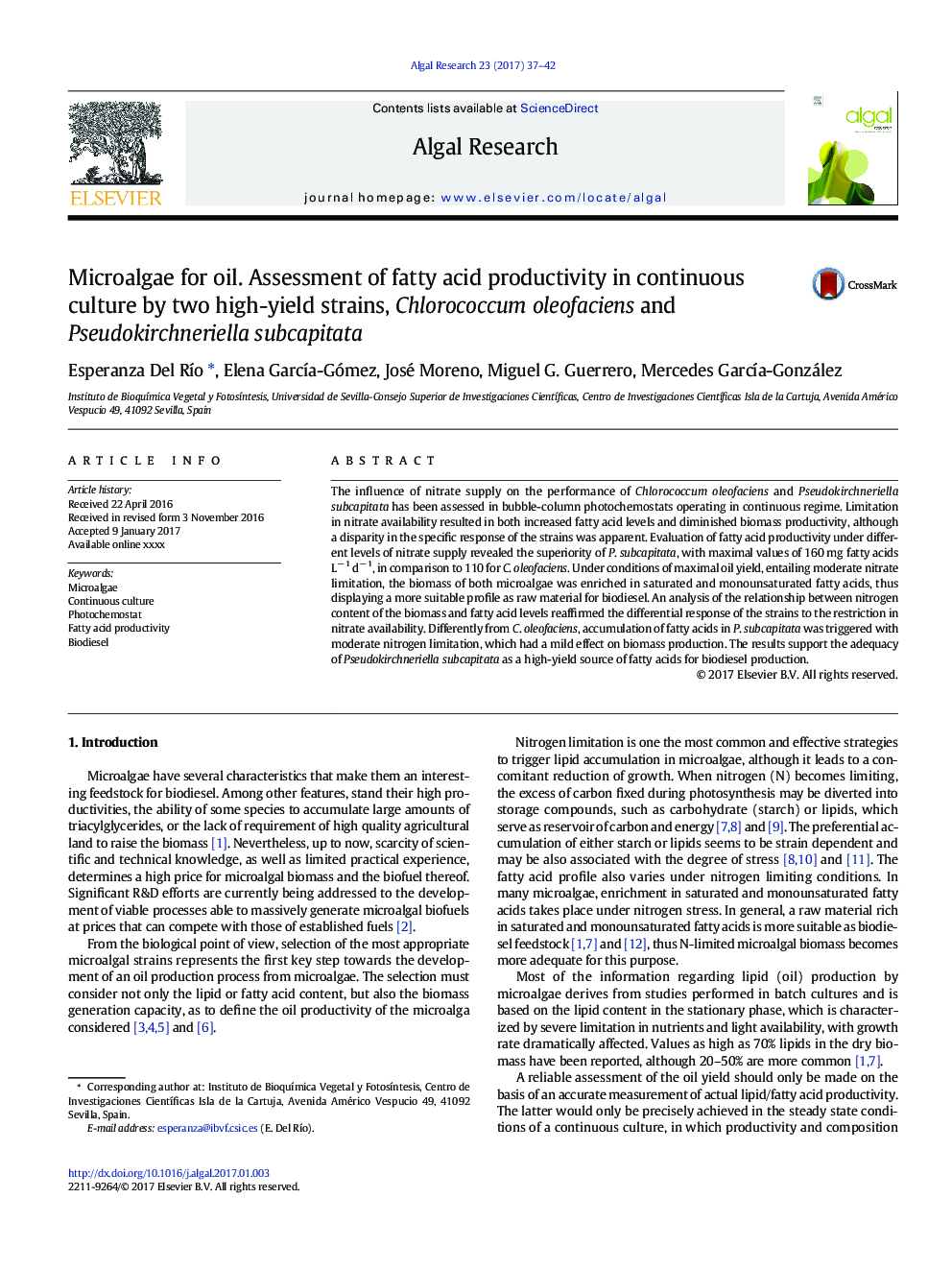| Article ID | Journal | Published Year | Pages | File Type |
|---|---|---|---|---|
| 5478320 | Algal Research | 2017 | 6 Pages |
Abstract
The influence of nitrate supply on the performance of Chlorococcum oleofaciens and Pseudokirchneriella subcapitata has been assessed in bubble-column photochemostats operating in continuous regime. Limitation in nitrate availability resulted in both increased fatty acid levels and diminished biomass productivity, although a disparity in the specific response of the strains was apparent. Evaluation of fatty acid productivity under different levels of nitrate supply revealed the superiority of P. subcapitata, with maximal values of 160 mg fatty acids Lâ 1 dâ 1, in comparison to 110 for C. oleofaciens. Under conditions of maximal oil yield, entailing moderate nitrate limitation, the biomass of both microalgae was enriched in saturated and monounsaturated fatty acids, thus displaying a more suitable profile as raw material for biodiesel. An analysis of the relationship between nitrogen content of the biomass and fatty acid levels reaffirmed the differential response of the strains to the restriction in nitrate availability. Differently from C. oleofaciens, accumulation of fatty acids in P. subcapitata was triggered with moderate nitrogen limitation, which had a mild effect on biomass production. The results support the adequacy of Pseudokirchneriella subcapitata as a high-yield source of fatty acids for biodiesel production.
Related Topics
Physical Sciences and Engineering
Energy
Renewable Energy, Sustainability and the Environment
Authors
Esperanza Del RÃo, Elena GarcÃa-Gómez, José Moreno, Miguel G. Guerrero, Mercedes GarcÃa-González,
